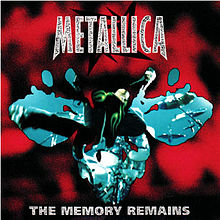
40) The Memory Remains (Reload, 1997)
The most interesting facet to this song about fading celebrity is the involvement of ‘60s singer-songwriter (and the song’s backing vocalist) Marianne Faithfull. An unlikely collaboration perhaps – though not Metallica’s most famous, nor ill-fated, brush with a 60s icon – it was a grungy, groovy, riff-laden high point on an album which otherwise failed to make much impact.
“I was in Ireland, quietly living my beautiful life, and suddenly the phone rang and this voice said, 'Hello, Marianne Faithfull? This is Lars from Metallica,'" Faithfull told Billboard in 2014. "And then the story unfolded that what they wanted was to fly to Dublin and to record me for The Memory Remains and put me on the song and that's what they did. And I made great friends with them of course and we stayed in touch."
Another track whose popularity was no doubt helped by its music video, two compelling features stand out in director Paul Anderson’s The Memory Remains video: Faithfull stalking slowly around a corridor grinding a barrel organ, and the anti-gravity ‘rotating band’ scenario, in which the jamming Metallicats appear to continually spin 360 degrees throughout the performance. Turns out it was actually a specially-constructed room which rotated around the stationary band – a fiendishly dizzying effect that reputedly cost £100,000.
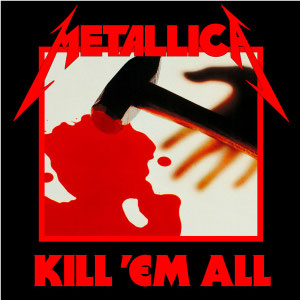
39) Motorbreath (Kill ‘Em All, 1983)
If there’s one Kill ’Em All song that deserves more credit than it gets, then it’s this ode to the rock’n’roll lifestyle which kicks off with Lars pummelling seven shades of shit out of his drums before giving way to a precision-tooled James Hetfield riff. Lyrically and musically, it seems to be a shoutout to one of the band’s biggest influences: Motörhead.
Ulrich has a different story though, telling Metal Hammer in 2016: “No, Motorbreath was actually something that Hetfield had brought in from somewhere else, something that we heavied up and sped up. I don’t think the word ‘Motor’ in Motorbreath correlates to ‘Motor’ in Motörhead. It was purely coincidental.”
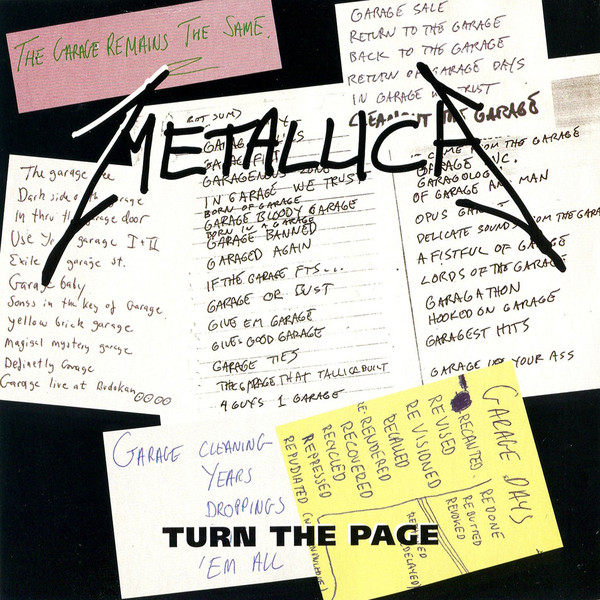
38) Turn The Page (Garage Inc., 1998)
When Lars Ulrich first heard Bob Seger’s Turn The Page (originally featured on the Michigan singer-songwriter’s Back In ’72 album) while driving across San Francisco’s Golden Gate Bridge he heard “James [Hetfield] all over it.” Recorded for the Garage Inc, album in autumn 1998, Hetfield duly instils a sense of quiet nobility into Seger’s meditative lyric about life on the road for a touring musician.
It became a favourite not just with fans, but with Seger himself. “I liked Metallica’s version of Turn The Page,” he told Classic Rock in 2018. “I thought they did a nice job of it. I especially liked the drums on it. I liked the different approach on the drums.”
A song about the rigours of life on the road, you might expect the accompanying promo vid to be a simple, cheap, classic Metallica backstage/tour bus/live show video à la Nothing Else Matters. However, they employed ex-Bathory drummer turned pop video auteur Jonas Åkerlund, who turned the clip into a stark, troubling story – subsequently extended to a fifteen minute film – about a sex worker (played by porn star Ginger Lynn) and her daughter.
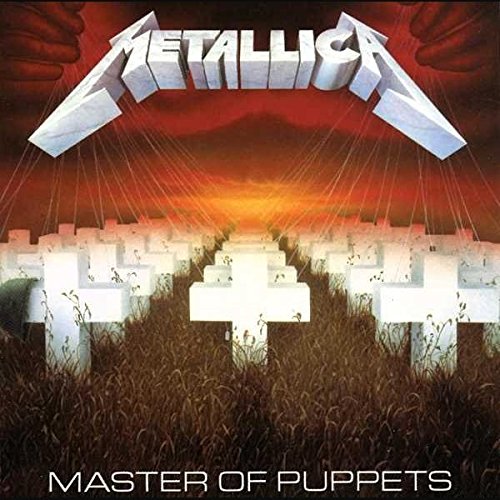
37) The Thing That Should Not Be (Master Of Puppets, 1986)
This Master Of Puppets album track starts slow and methodical with a riff that Sabbath would be proud of, before Hetfield starts up with his ‘Messenger of fear in sight/Dark deception kills the light’ bit – bet Metallica aren’t too proud of that couplet now.
The lyrics are some of Hetfield’s many based on a story about a scary monster by renowned American writer H.P. Lovecraft. The story in question was The Shadow Over Innsmouth, the only Lovecraft story to be published in book form during the horror master’s lifetime.
Hetfield’s preoccupation with Lovecraft was indicative of a band-wide thirst for the horror genre, with Hammett telling us in 2018 that the horror was one of the main influences on his playing. “I’m basically a day-dreamer, always have been, and when I pick up my guitar, which is the most ready way for me to express myself and my feelings, I have a tendency to play stuff that’s dark, haunting and in a minor key,” he said. “I definitely attribute that to my earlier influence of the horror genre. It wasn’t just the movies, but it was also the books.”
In March 2020, Dr Torben Riehl and Dr Bart De Smet of Ghent University in Belgium discovered a new crustacean species in the depths of the Pacific Ocean and named the worm-like creature Macrostylis metallicola as a fitting tribute to the band and this song.

36) Hit The Lights (Kill ‘Em All, 1983)
The first track on one of the landmark debut albums in the history of metal starts off with a wall of noise that quickly erupts into a 100mph statement of intent, complete with one of the great opening lines in history: ‘No life ’til leather, we’re gonna kick some ass tonight.’ If one song represents the birth of Metallica, this is it.
“I’m not going to argue with that,” Ulrich told Metal Hammer in 2016. “The version on Kill ’Em All was basically a marriage of two songs. Hetfield brought in the verses and the chorus, which came from something he had done in a band called Leather Charm, and I brought in the whole back half of it, which was from something I had done before. After three verses and three choruses, it goes into this whole other universe, with a new riff and a fucking half-hour-long jam out.”
“It was the first Metallica song I played on,” added Hammett. “I’d only been in the band for three weeks. I flew in the second week of April, under the auspices of auditioning for the band. I arrived on a Monday and played the first show that Friday. We played two or three shows a week, so I was ready to go. I kind of realised I must be in the band because nobody told me otherwise.”
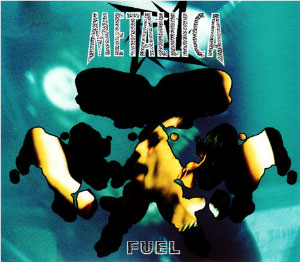
35) Fuel (Reload, 1997)
‘Gimme fuel, gimme fire, gimme that which I desire, OOH!’ The opener to one of Metallica’s lesser loved albums, this song was a glorious, energetic statement of intent which the rest of the album largely failed to live up to. Never mind.
Arguably Reload’s most popular song, Fuel’s status was cemented when it was used as the high octane theme tune to NASCAR – America’s version of Fleetwood Mac’s The Chain being used on Formula 1.
It was also a favourite of Diamond Head’s Brian Tatler, who told us in 2018 that Fuel was: "My favourite song from the Load/Reload period. Great riffs, great vocal, lots of energy."
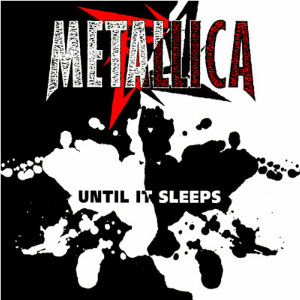
34) Until It Sleeps (Load, 1996)
The lead single chosen to usher fans into the whole new era of Metallica, fur coats and all, Until It Sleeps was evidence that the quartet were going to channel their influences at the time (Alice In Chains and Corrosion of Conformity, essentially) and put their own spin on them – and to hell with the consequences. Still, in an era even Hetfield has since tried to distance himself from, this angsty mid-tempo rocker is a highlight in a sea of mainly misunderstood material.
It also came along with another of Metallica’s all time great videos. Director Samuel Bayer had already helmed promos for Nirvana, Ozzy, Iron Maiden, Rush and David Bowie when Metallica approached him to interpret the advance single from Load. The result scooped Best Rock Video at the 1996 MTV Music Awards, and also afforded Metallibangers their first glimpse of the new-look, new-sound ‘Tallica. Few were ready for the sight of Lars in guyliner and a feather boa, but the live-action reconstructions of details from Hieronymus Bosch art were superbly (sur)realised.
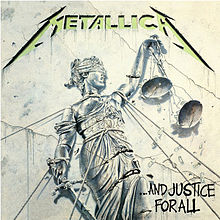
33) The Shortest Straw (…And Justice For All, 1988)
Flaws aside, back in 1988 …Justice was mostly greeted with enthusiasm by fans and critics, praised for the musicianship displayed in the labyrinthine song structures, the dizzying changes of Blackened and the title song a logical extension of earlier tracks like Master Of Puppets.
On an album dominated by sprawling epics, The Shortest Straw was one of few early Metallica hangovers that made its way onto the …Justice album: a typically brutish rocker that would have taken pride of place on either of the first two Metallica albums, punchier and more direct than many of the songs that surrounded it. For disciples of the riff it’s hog heaven, a steady stream of rousing, memorable motifs. It was also one of the shorter offerings on the album – though it’s worth noting it still clocks in at over 6-and-a-half minutes…

32) The Frayed Ends Of Sanity (…And Justice For All, 1988)
Once upon a time, hardcore fans would hold regular candlelight vigils through sun, snow and rain, often stretching a full season or two huddled around fires, eating pot-noodles and waiting to hear a snippet of this firm cult-classic live (despite this song’s status as a fan favourite, it didn’t get a full-length live debut until 2014, and has only been played live another 11 times since).
A relentless stomper just shy of eight minutes long, this song is stuffed with mind-melting solos, furious riffs, epic song structure, flawless musicianship, electric shifts, tempo changes, a searing main juggernaut and that tremendous mini-riff at five minutes, 25 seconds which brings us right back, full circle to where we started. Essentially, everything that made Metallica stand out as their musical style evolved pre-‘Black’ album. Any Metallica fan would tell you it pretty much has every single thing you want in a Metallica song.
Drummer Lars Ulrich reflected in 2018: “I think we were getting better at what we were doing. We were more on top of what we were doing. It felt like we were more confident steering the ship, so we could do The Frayed Ends Of Sanity. I don’t think we were capable of doing that five years earlier – we just didn’t have the chops.”
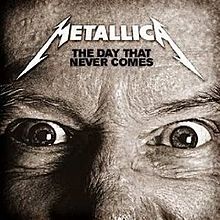
31) The Day That Never Comes (Death Magnetic, 2008)
Metallica all but perfected the art of forlorn balladry, but here they combine it with a second half which dissolves into the sort of intense soloing, furious riffing and relentless shredding that brought them screeching back into the Metallibanger family’s warm embrace. Love is a four letter word, indeed.
Accompanied by a strangely moving video, throughout which you’re constantly expecting something appalling to happen, Danish director Thomas Vinterberg was given free rein to interpret Hetfield’s lyric about “the human element of forgiveness,” choosing to relocate the song within tense events during a non-specific war in the Middle East. “This was such a beautiful and epic way to treat the song in something that was really radically different than the specificity of the lyrics,” added Ulrich.
